This Pesto Pasta is a must have recipe for your easy dinner arsenal!
Pesto Pasta is a deliciously cheesy, garlicky and herbaceous meal with the option of roasted veggies! It’s light, vibrant and comforting, brimming with peppery basil, nutty pine nuts, zingy garlic, rich olive oil, a kiss of lemon, and a crescendo of Parmesan cheese. Best of all, this Pesto Pasta recipe is easy to whip up in less than 30 minutes and is extremely flexible – use almonds, arugula, walnuts, kale, etc. and add any protein. Serve this Basil Pesto Pasta with garlic bread and Caesar salad for an easy fresh taste of summer!
We love everything pesto! For more must-have recipes using pesto, don’t miss: Creamy Chicken Pesto Pasta, Pesto Pasta Salad, Creamy Pesto Chicken Skillet, Sheet Pan Parmesan Chicken and Vegetables, Crockpot Pesto Mashed Potatoes, and TikTok Feta Pasta.
PIN THIS RECIPE TO SAVE FOR LATER
Watch: How to make Pesto Pasta
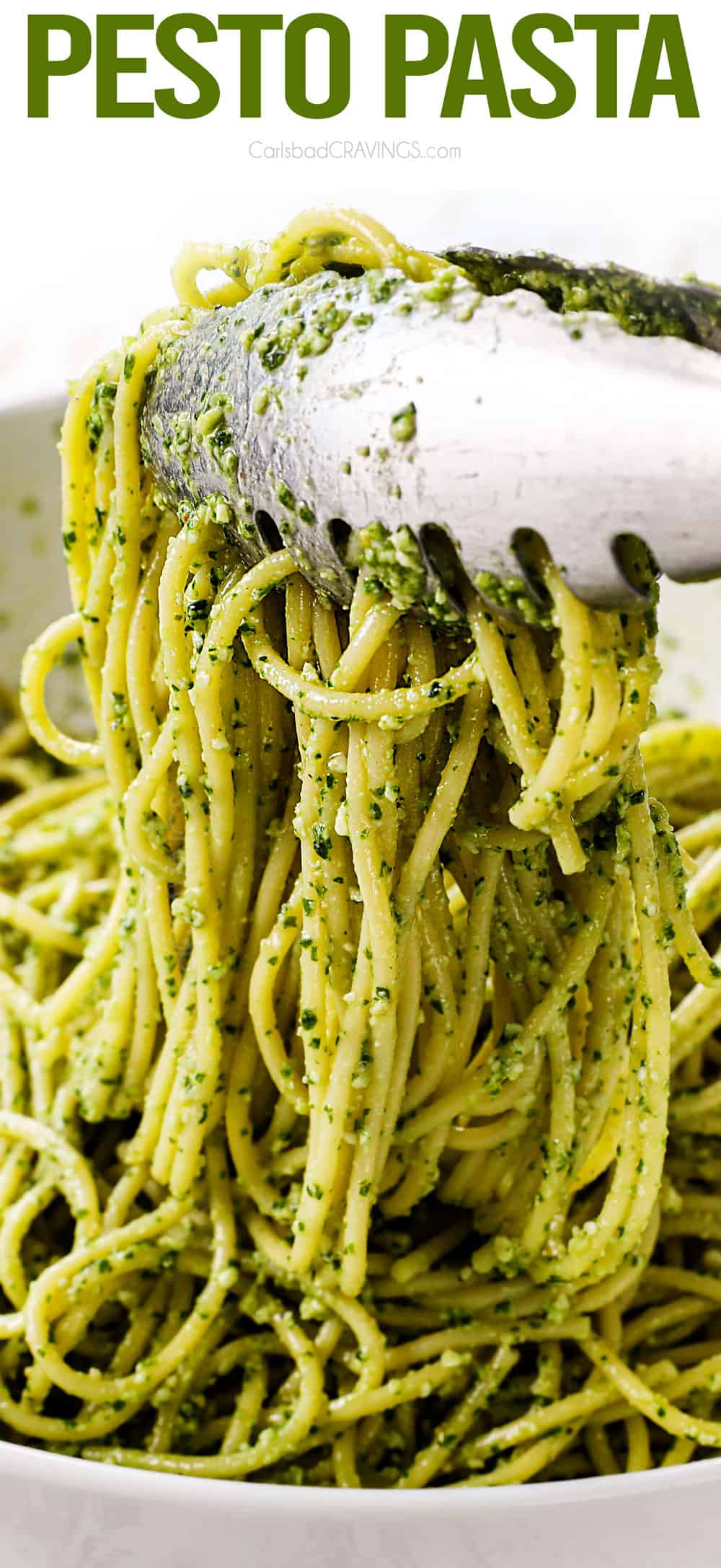

Why you’ll love this Basil Pesto Pasta
The best Pesto Pasta recipe starts with sensational homemade pesto. No processed jars can hold a candle to this homemade pesto thanks to the abundantly fresh, ingredients. It’s a brilliantly fragrant flavor bomb without any additives or preservatives – and you can taste the difference!
This Pesto Pasta recipe is a simple, 30-minute meal that tastes like a million bucks. Just a few simple ingredients and a few pulses of your food processor and you have a lazy yet lavish meal that makes the taste buds sing.
My secret tips elevate this Pesto Pasta recipe. Lemon juice preserves the beautiful bright color and enhances the fresh flavors, toasting the pine nuts adds a depth of sweetness, using Parmigiano-Reggiano adds intense complexity and not over-processing the oil prevents the basil pesto from becoming bitter.
This Pesto Pasta is thick and glossy instead of overly oily. Tossing the pesto and pasta together with some starchy, salty, reserved pasta water emulsifies the pesto into a luscious, yet light, aromatic sauce that glides effortlessly over the pasta.
The roasted vegetables add pops of hand’s–off flavor. As your vegetables roast, the tomatoes sweeten and the zucchini and asparagus turn crisp-tender all while soaking up the pesto bath. The extra juices from roasting are added to the pasta for another exciting dimension of flavor.
This recipe is an adaptable blank canvas. This Pesto Pasta recipe is so easy to make your own by adding veggies, omitting veggies, adding protein, making it more or less garlicky, lemony, cheesy, etc.
The homemade pesto is make ahead friendly. Make the pesto earlier in the day or week, then just combine with your hot pasta! The pesto also makes a brilliant freezer standby so all you need to keep stocked is pasta AKA winning at dinner time.
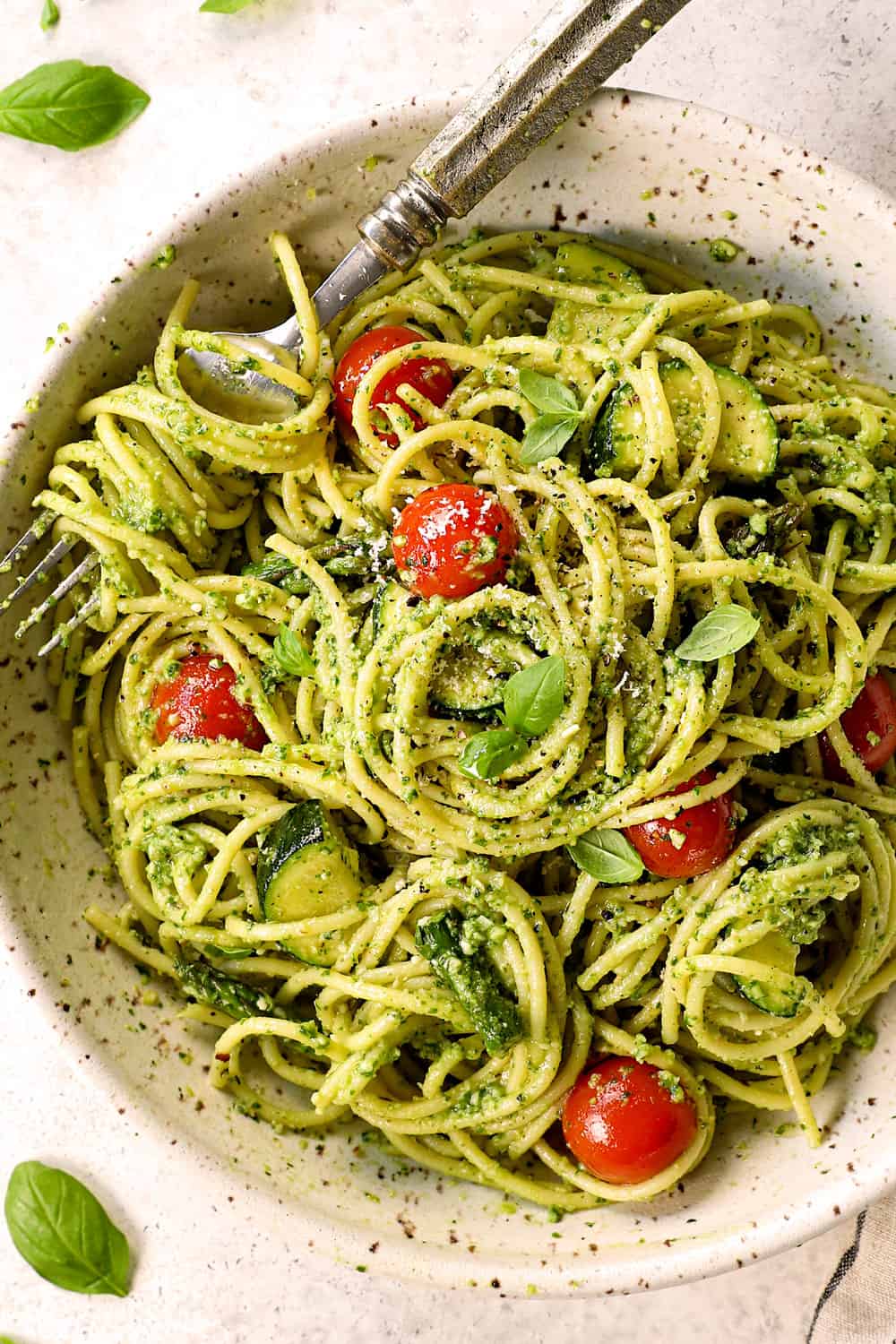
Basil Pesto Pasta Ingredients
This easy Pesto Pasta recipe features homemade basil pesto sauce bursting with the herbaceous freshness of basil, the pungent zing of garlic, the salty, nuttiness of the freshly grated Parmigiana Reggiano, a sunny lift of citrus from the lemon juice, all underscored by the sweet, nutty, toasted pine nuts and rich olive oil. Toss in some pesto roasted vegetables, al dente pasta, and a dusting of freshly grated Parmesan and you won’t be able to put your fork down! Here’s what you’ll need to make this simple but delicious pasta recipe (full recipe measurements in the recipe card at the bottom of the post):
FOR THE PESTO

CAN I USE STORE-BOUGHT SHREDDED OR GRATED PARMESAN?
I don’t recommend store-bought shredded or grated Parmesan for the best Pesto Pasta, but if you do need to use it for a shortcut, use shredded instead of grated and reduce the Parmesan in the recipe to ½ cup instead of ¾ cup freshly grated Parmesan. Store-bought grated Parmesan is more compact verses freshly grated which is more aerated so you will need less. You may also need to increase the olive oil.
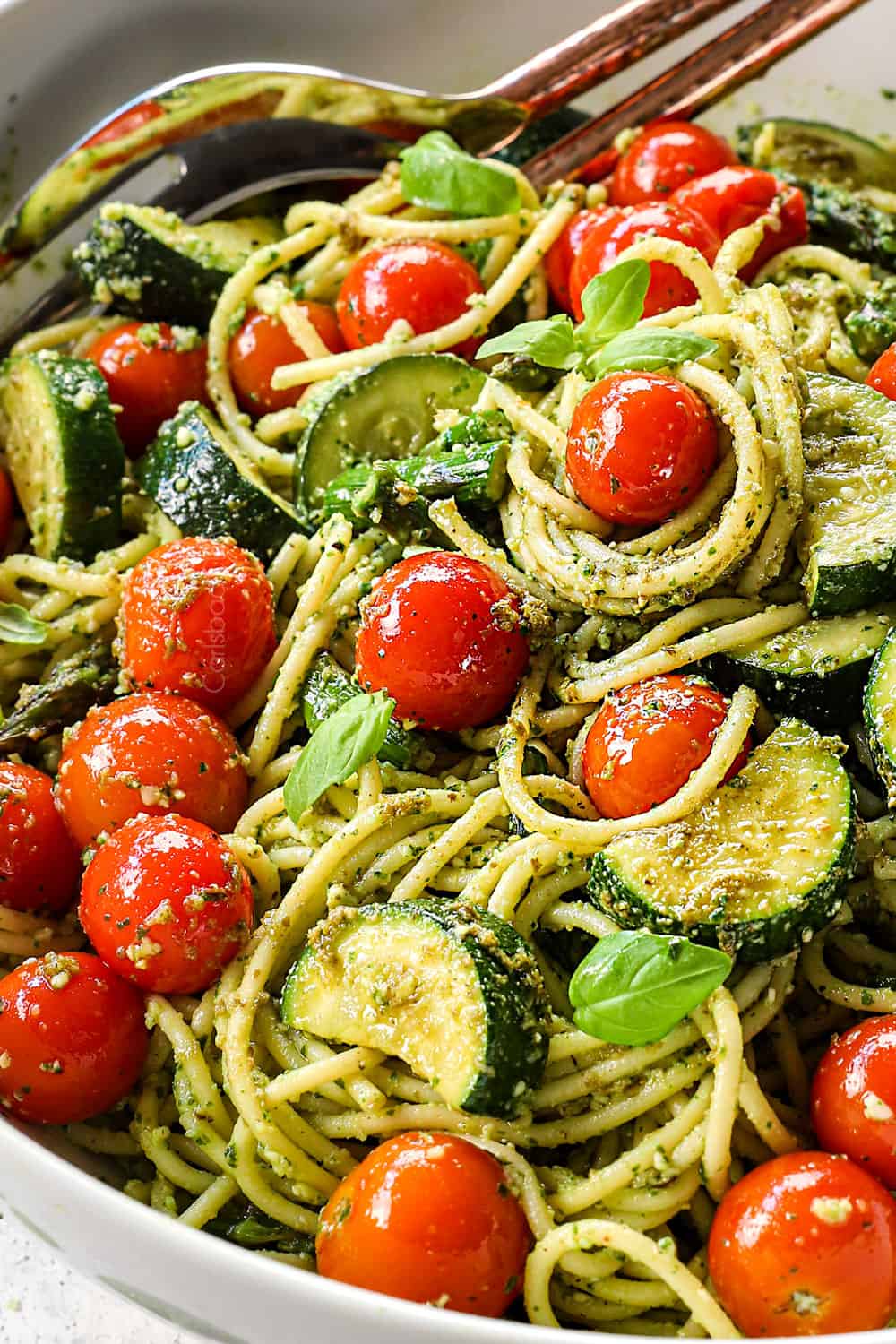
FOR THE PASTA AND VEGETABLES
The vegetables are roasted with some of the homemade pesto, olive oil, salt and pepper. You can use the below vegetables or mix and match your favs with similar roasting times, or omit the veggies altogether.

What’s the Best pasta for pesto?
Pesto Pasta can be made with any pasta, however, it is best with straight pastas without any spirals/twirls so the pesto can easily glide of over the smooth surfaces and not get caught in any crevices, which makes for a less “saucy” pasta.
My personal favorite pasta for pesto is a long, smooth pasta such as spaghetti or linguine which easily mop up the pesto and are pleasure to slurp up.
Penne or ziti are also good options because their straightforward shapes allow the luscious pesto sauce to easily cling to their surface.
All that being said, you can still use a different pasta shape, but I would reduce the amount to 12 ounces, otherwise your pasta will seem dry.

Substitutions for Pesto Sauce Pasta
If you don’t have all the ingredients to make Basil Pesto Pasta, don’t worry, you can make some simple substitutions:
How to Make Pesto Pasta
If you’ve never made homemade Pesto Pasta before, you’re in for a treat! You’ll be amazed at how quick and easy it is to make pesto pasta from scratch. The pesto itself doesn’t need to be cooked, so all you have to do is boil some pasta and roast a handful of veggies. Let’s take a closer look at how to make it (full recipe in the recipe card at the bottom of the post):
Step 1: Roast the Vegetables
- Add the chopped veggies to baking sheet and toss with a little pesto, olive oil, salt and pepper. It will seem look like a lot of oil/pesto, but it will be mixed in with the pasta later for an extra flavorful sauce.
- Spread the veggies out in a single layer once they’ve been seasoned and roast at 400ºF until the asparagus is crisp-tender.
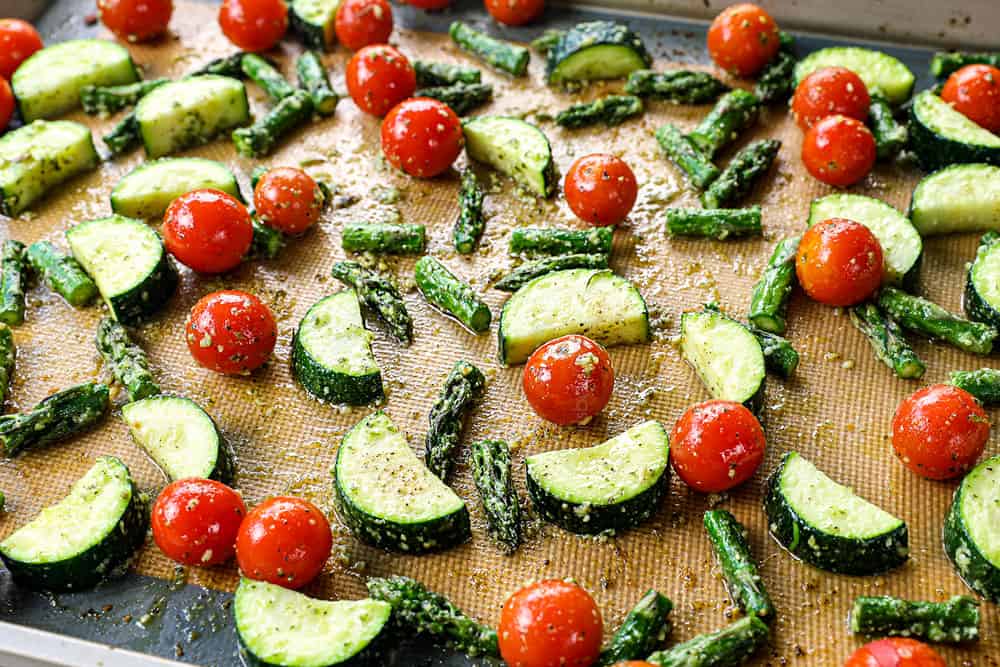
Step 2: Make the Basil Pesto Sauce
- Preheat a nonstick skillet over medium-high heat. Do NOT add oil to the pan!
- Add the pine nuts and toast them just until golden in spots. Immediately remove from the skillet so they don’t continue to cook. Be careful; pine nuts can go from being perfectly golden to burnt in a matter of seconds.
- Add all the pesto ingredients except the olive oil to a food processor and then pulse to chop.
- With the food processor running, slowly drizzle in the olive oil until it is completely combined.
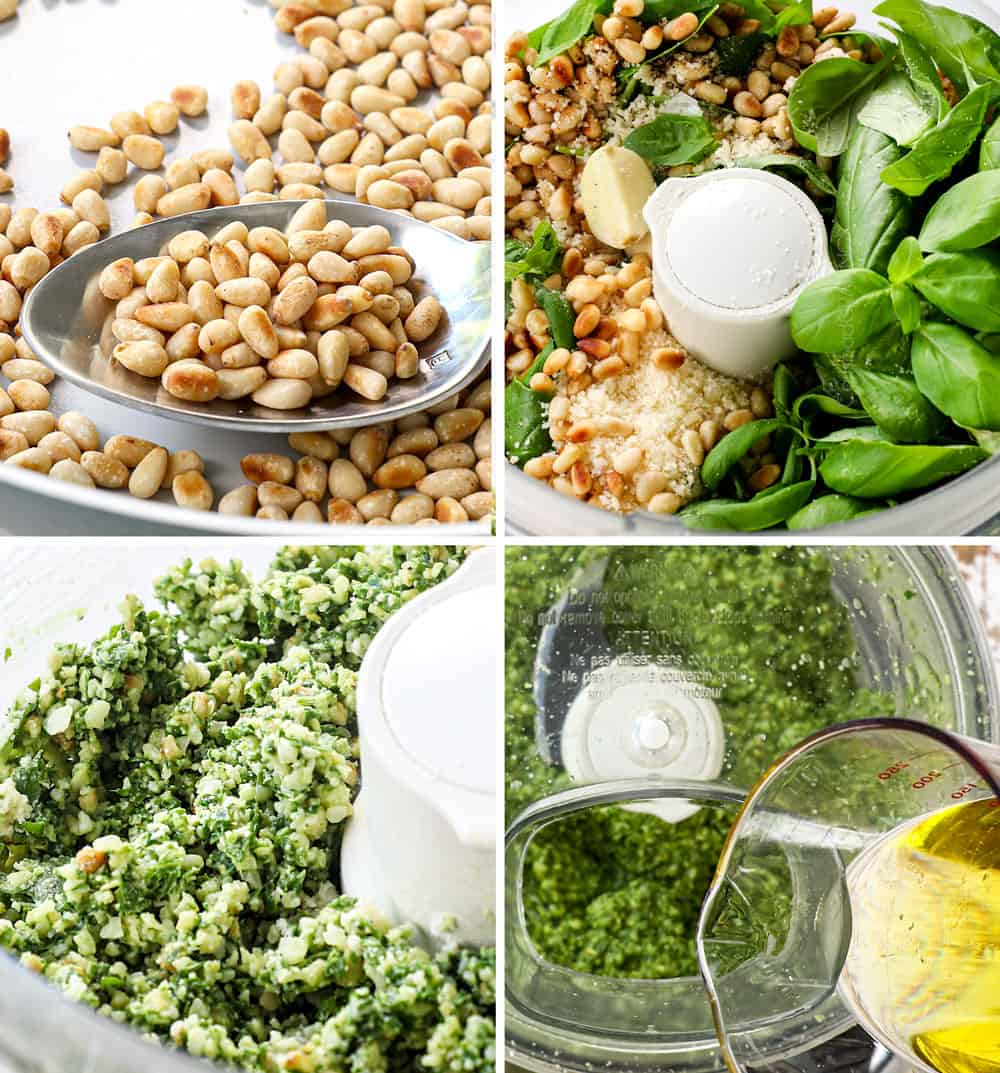
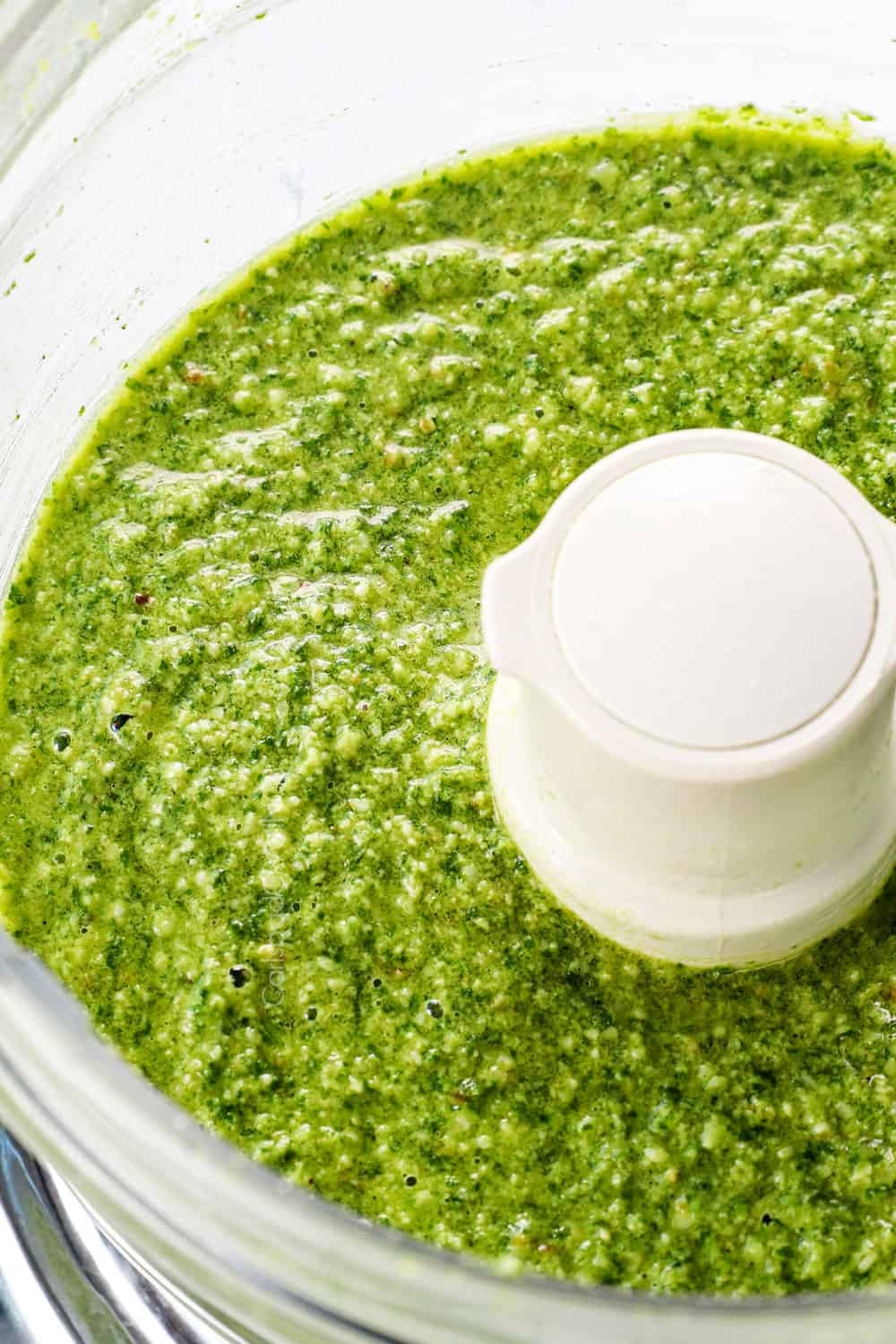
Step 3: Cook the Pasta
- Cook the pasta in salted water according to package directions. You want the pasta to be al dente, meaning it should still have some bite to it.
- Reserve 1 cup of the pasta water before you drain the pasta.
Step 4: Assemble the Pesto Pasta
- Add the drained pasta to a mixing bowl.
- Add the prepared pesto and additional lemon juice.
- Toss to coat pasta in pesto, adding reserved pasta water a little at a time if needed to make the pasta silky and saucy, rather than dry and sticky.
- Stir in the roasted vegetables.
- Serve immediately, garnished with freshly grated Parmesan.
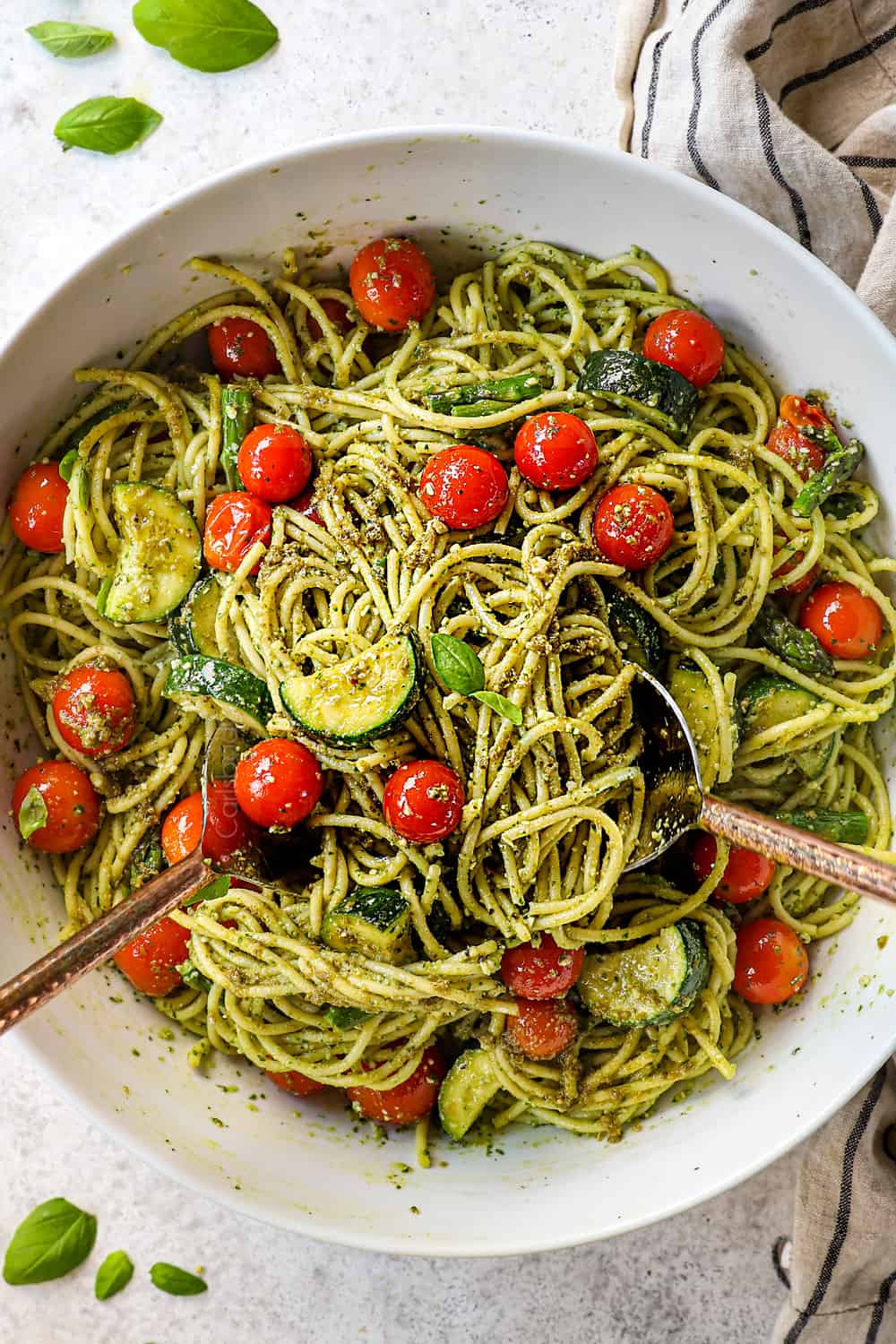

meal prep pesto pasta
This Pesto Pasta recipe can be made completely in advance (it reheats really well!) or you can prepare the individual ingredients ahead of time:
-Pesto: Can be prepared and refrigerated for up to three days. It’s a fresh sauce, so it doesn’t have a long shelf life.
-Parmesan: Can be grated and stored in an airtight container in the fridge until ready to use.
-Veggies: Can be chopped or sliced, then stored in an airtight container in the fridge until ready to roast. I don’t recommend roasting the veggies and then assembling the pasta at a later date. Roast the veggies just before assembling the pasta for the best flavor and texture.

Tips for Pasta with Pesto Sauce
Watch the olive oil: Different olive oils have different flavors and strengths, even extra virgin olive oil, so choose what you like best.
Don’t skip toasting the nuts: As the heat releases the nuts’ natural oils, it intensifies their aroma and enhances their nutty sweetness.
Scrape down the sides of the bowl: We don’t want any stubborn, large pieces of basil or garlic in your pesto sauce, so take care to scrape down the sides of the bowl while processing the ingredients before you add the olive oil.
Add the olive oil slowly: In order to emulsify the pesto (i.e. combine two ingredients together which do not ordinarily mix easily), keep the food processor running while you pour the oil in a slow, steady stream.
Don’t over-process the olive oil or your pesto sauce will taste bitter: Extra virgin olive oil is super sensitive to mechanical agitation – as in a blender or a food processor. Meaning, if you over-process the oil, its polyphenols can break away from the fatty acids causing oxidation which will make the pesto taste bitter. If you’re worried about this, you may stir the olive oil in by hand.
Let the flavors meld: Homemade pesto sauce is best if allowed to rest for at least 15 minutes before serving, preferable 2 hours, to let the flavors meld. So, for best results, make the pesto earlier in the day – then all you have to do is add it to your hot pasta!
Cook the pasta in less water. I recommend cooking the pasta in a large Dutch oven so that it will fit the length of the dish, allowing you to use less water. This will make the water extra starchy, which creates the most luscious glossy, thick pesto sauce (see below).
Add some pasta water/not regular water to the pasta: The salty, starchy pasta water is liquid gold. It will loosen the pesto so it glides effortlessly over the pasta without watering it down like regular water will. The starches that are released from the pasta while cooking emulsify with the pesto, naturally thickening the pesto into a slick, herbaceous sauce.
Don’t mix the pasta and pesto over heat: The basil pesto doesn’t like any additional heat (other than from the warm pasta), or it can turn dark green/black and loose flavor. You should combine the pasta and pesto in a bowl or cold pot – off heat.
Don’t overcook the vegetables: It’s important that you only roast the veggies until the asparagus is crisp-tender. Overcooked asparagus is limp and mushy — not what you want for your pasta with pesto!
Adjust the Pesto Pasta recipe to taste: As with all recipes, it is important to make this recipe right for YOU, especially because pesto is made with living ingredients that will vary in brightness, saltiness, and overall intensity of flavor. You may find you need extra Parmesan, an extra squeeze of lemon or loads of freshly cracked pepper. So, prepare to be flexible!
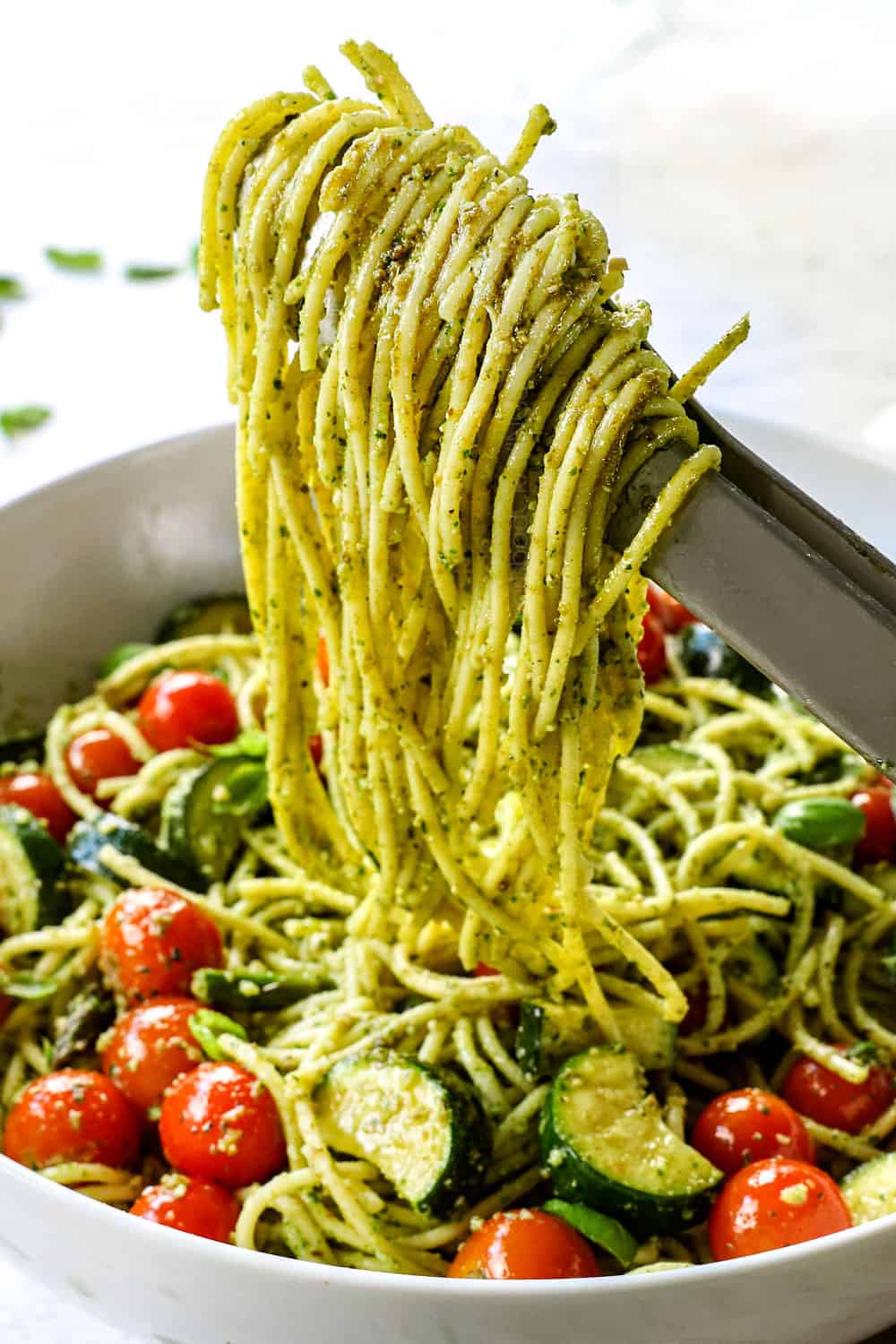

Pesto Pasta Variations
This Pesto Pasta recipe is the ideal recipe to make your own. You can adjust the pesto itself or add protein, sun-dried tomatoes, etc. to the dish. Here are a few ideas:
Pesto Variations:
- Use a different basil: Try a different variety of basil such as large leaf Italian basil, lemon basil, mint basil, Greek basil, etc. Each will affect the taste of the recipe in an exciting new way.
- Swap in different greens: Swap some or all of the basil for other greens such as parsley, cilantro, mint, arugula, kale, spinach, etc., or play with a combination.
- Add herbs: In addition to basil, try flavoring the pesto with marjoram, mint, thyme or oregano.
- Swap in other cheese: Swap some of the Parmesan Reggiano for sharper, saltier, tangier, more pungent Pecorino Romano. You can even use Cotija cheese in combination with cilantro and pepitas.
- Swap in other nuts: Swap the pine nuts for almonds, walnuts, pecans, cashews, or pistachios.
- Make it nut free: Swap the pine nuts for pumpkin seeds, pepitas, hemp seeds, etc.
- Punch up the flavor: Add anything to your pesto such as sun-dried tomatoes, roasted red peppers, jalapeños, red pepper flakes, anchovies, capers, olives, artichoke hearts, etc.
- Add some heat: I’m a big fan of adding a pinch of red pepper flakes to my Basil Pesto Pasta – yum!
- Make vegan pesto: Substitute the cheese with a non-dairy cheese or add 3 tablespoons of nutritional yeast. Nutritional yeast is nutty and cheesy.
pasta Variations:
- Use more pesto: You may want to use more pesto depending on how strong you want the flavor. Start with less then add more to taste.
- Use any veggies you like! Just make sure the roasting times or similar. You can also use sautéed vegetables, grilled vegetables or any leftover cooked vegetables.
- Cheesy Pesto Pasta: You can add additional cheese directly to the pasta after tossing it with the pesto.
- Lemon Pesto Pasta: Add additional lemon juice 1 tablespoon at a time for a brighter, lemon herb pasta.
- Creamy Pesto Pasta: Instead of reserved pasta water, stir in heavy cream until the pasta reaches your desired consistency.
- Pesto Pasta with sun-dried tomatoes: Add ¼ cup chopped sun-dried tomatoes in oil for a zesty flavor profile.
- Pesto Pasta with mozzarella: You can stir freshly shredded mozzarella directly into the pesto pasta or sprinkle it on top of the finished dish, cover and let it melt into a blanket of cheesy splendor.
- Pesto Pasta with chicken: Season chopped chicken with salt, pepper and paprika pan sear until cooked through.
- Pesto Pasta with sausage: Mild or hot ground Italian sausage would be amazing. You could also use turkey sausage or chicken sausage.
- Pesto Pasta with shrimp: Roasted shrimp or butter garlic shrimp would be fabulous. Stir into the pasta after it’s done cooking.
- Pesto Pasta with bacon: Sizzle up thick-cut bacon and add to the pasta at the very end of cooking.
- Pesto Pasta with spinach: Stir in 1 to 2 cups baby spinach at the end of cooking, cover and allow to wilt.
- Spicy Pesto Pasta: Amp up the heat with 1/4-½ teaspoon red pepper flakes. You can also add red pepper flakes to individual servings to keep the pasta family friendly.
- Gluten free Pesto Pasta: Use your favorite gluten free pasta. The rest of the ingredients are gluten free.
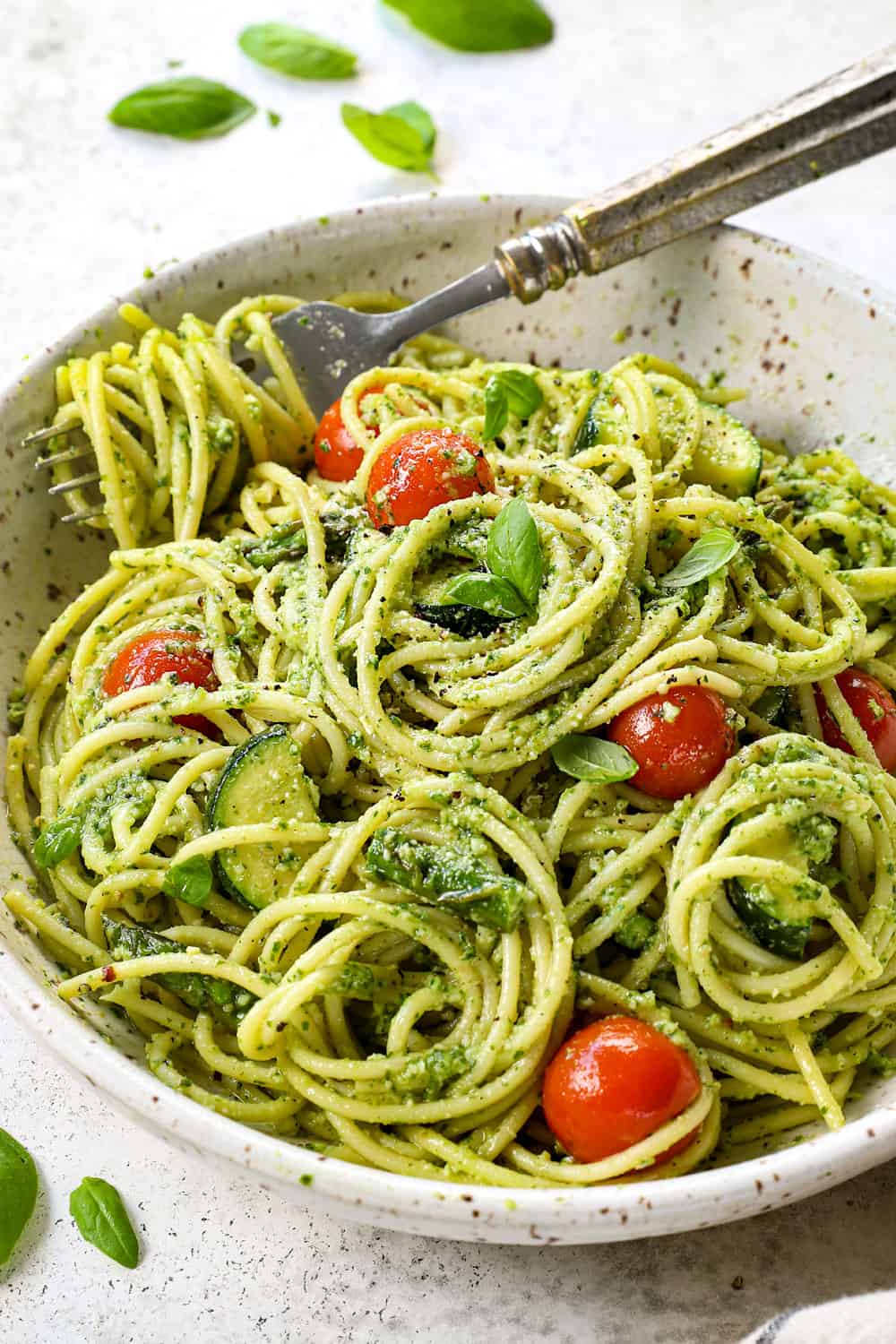

What to Serve with Pesto Pasta
This Basil Pesto Pasta recipe is extremely versatile. We love it with a bright refreshing salad along with garlic bread! Try one or more of the following side dishes when making this recipe:
Salad: Caesar Salad, Spinach Salad, Wedge Salad with Blue Cheese Ranch, Watermelon Feta Salad, Apple Salad or Broccoli Strawberry Salad.
Bread: Garlic Bread, Soft and Fluffy Dinner Rolls or Garlic Parmesan Butter Breadsticks.
Fruit: Fruit Salad with Honey Lime Vinaigrette, Winter Fruit Salad with Honey Lime Poppy Seed Vinaigrette and Berry Salad in Honey Mascarpone.

How to Store Leftover Basil Pesto Pasta
Store leftover pasta in an airtight container in the fridge for up to five days. I do not recommend freezing the pasta, but you may freeze the pesto (instructions to follow).

HOW TO REHEAT Pesto pasta
Basil Pesto Pasta reheats like a dream in the microwave or on the stovetop. You may need to add a little olive oil and/or water if the pasta looks dry.
Microwave: Microwave small portions for 1 minute, stir, then continue to heat at 30-second intervals until warmed through.
Stove: For larger portions, reheat pasta gently on the stove over medium-low heat, stirring occasionally.
HOW TO freeze
You may freeze the pesto, but not the Pesto Pasta. Freezing pesto is a great way to use up an abundance of summertime basil or to always have some on hand. Freeze basil pesto for up to 3 months, then thaw in the refrigerator when ready to use in this recipe!
TO FREEZE: Transfer pesto sauce to a freezer size bag and freeze flat. When ready to use, let thaw completely in the refrigerator.
Pesto Sauce Pasta FAQs
Classic Pesto is an uncooked basil cheese sauce or condiment made of fresh basil, Parmigiano Reggiano, pine nuts, garlic, extra virgin olive oil, salt and pepper– sometimes with some Pecorino as well. The ingredients are combined in a food processor then finely chopped to create a thick green sauce.
Pesto originated in Genoa, Italy around the 16th century. The name pesto comes from the Genoese word pestâ, which means to pound or to crush. This refers to the original method of preparing pesto with a mortar and pestle. Today, pesto sauce is incredibly quick and easy to make in the food processor with countless variations.
Basil pesto is bright, herby and peppery with a hint of anise from the basil, salty, nutty and rich from the Parmesan, buttery and nutty from the pine nuts, garlicky from the garlic with a pleasant rich, herby grassiness from the extra virgin olive oil.
Classic basil pesto, Pesto Alla Genovese, is by far the most popular. In fact, whenever you see the word “pesto” on a restaurant menu or in a recipe without any clarification, it is unmistakably referring to basil pesto. There are, however, thousands of variations of pesto sauce. Pesto can be made with any leafy green instead of basil such as parsley, arugula, kale or spinach, any nuts such as almonds, walnuts, cashews, or pistachios and additions such as lemon zest, sun-dried tomatoes and even ricotta. So, let your imagination run wild!
This basil pesto is made with natural, fresh ingredients so it needs to be stored in the refrigerator. It will keep in an airtight container in the fridge for up to 5 days, but is freshest/best/most flavorful if used within the first 3 days. The oil will separate to the top after it has been sitting, so just give the homemade pesto a stir once ready to use.
Browning is a natural process that occurs when the chopped basil is exposed to the air (oxidation). There are three ways to help prevent browning:
1. Limit the exposure to air by pressing plastic wrap directly on the surface of the pesto before sealing to store.
2. Pour a thin layer of olive oil on top of the pesto to cover its surface before sealing to store.
3. Blanch the basil leaves briefly before processing. It locks in the bright green color of the leaves. To blanch the basil, dunk the basil leaves into boiling water for 5 to 10 seconds then submerge in ice water. Pat the leaves completely dry before making the pesto.
Note that you only need to use one of these tactics if you make the pesto in advance and store it separately before preparing the entire pasta dish!
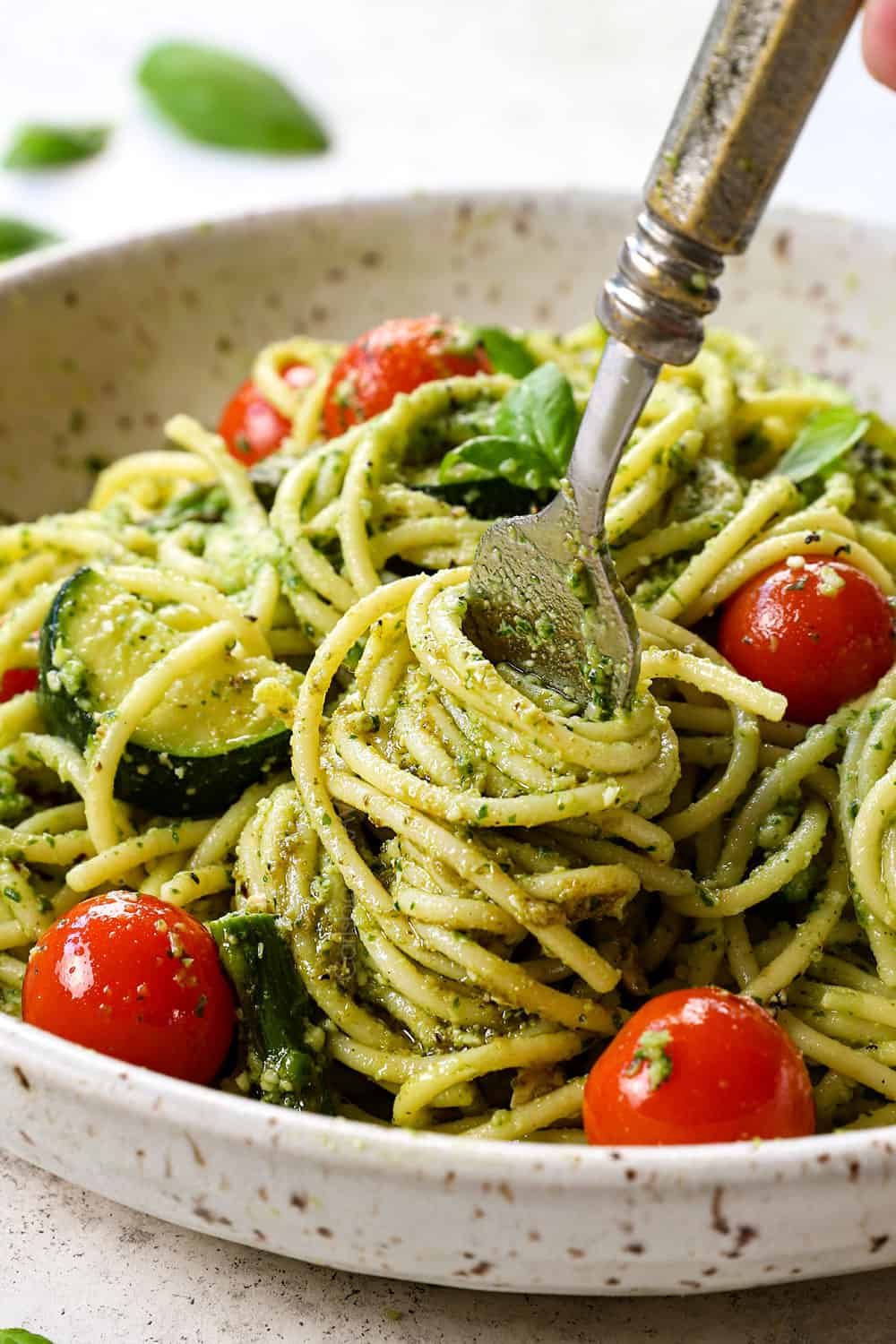
WANT TO TRY THIS Pesto Pasta RECIPE?
PIN IT TO YOUR Pasta, dinner or 30 minute recipe BOARD TO SAVE FOR LATER!
FIND ME ON PINTEREST FOR MORE GREAT RECIPES! I AM ALWAYS PINNING :)!
©Carlsbad Cravings by CarlsbadCravings.com

Pasta with Pesto
Save This Recipe To Your Recipe Box
You can now create an account on our site and save your favorite recipes all in one place!
Ingredients
PASTA
- 1 pound linguine or thin spaghetti
- 1 cup reserved pasta water (you will not use all of it)
- 2 tablespoons lemon juice
- 1/2 cup freshly grated Parmigiana Reggiano, or more to taste
PESTO
- 2 cups fresh basil leaves, tightly packed
- 3/4 cup freshly grated Parmigiana Reggiano (use ½ cup if not freshly grated)
- 1/2 cup raw, unsalted pine nuts (the best substitute is cashews)
- 3 garlic cloves, peeled
- 2 tablespoons lemon juice
- 1/2 teaspoon salt
- 1/4 teaspoon pepper
- 1/2 cup extra virgin olive oil
Instructions
- Prep: Preheat oven to 400°F. Begin boiling the water for the pasta.
- Pesto: Preheat a skillet over medium-high heat (without any oil). Add pine nuts and toast until golden in spots. Immediately transfer the nuts to a food processor so they don’t continue to cook.
- Add the remaining pesto ingredients EXCEPT the olive oil (basil through pepper) to the food processor. Pulse until finely chopped.
- With the food processor running, slowly drizzle in the olive oil until it is completely combined; set aside.
- Roasted Vegetables: Add vegetables to a baking sheet lined with foil or a non-stick mat. Toss with 1 tablespoon olive oil, 2 tablespoons homemade pesto, ½ teaspoon salt and ¼ teaspoon pepper. (There will be a generous amount of oil/pesto – this will transfer to the pasta later). Roast at 400 degrees F in a single layer for 12-15 minutes or until asparagus is crisp-tender.
- Pasta: Meanwhile, cook pasta al dente in generously salted water according to package directions. Reserve 1 cup pasta water before you drain the pasta.
- Combine: Add drained pasta to a very large mixing bowl or cold pot, OFF HEAT along with all of the pesto, ¼ cup reserved pasta water and 2 tablespoons lemon juice. Toss to coat the pasta. Stir in roasted vegetables and pan juices; toss again, adding reserved pasta water a little at a time if needed to make the pasta silky and saucy, rather than dry and sticky. You can also alternate the reserved pasta water with a drizzle of olive oil if you like. Taste, and season with additional salt, pepper and lemon juice if desired.
- Serve immediately, garnished with plenty of freshly grated Parmigiana Reggiano, and freshly cracked pepper.
Video
Notes
Tips and Tricks
- Watch the olive oil: Different olive oils have different flavors and strengths, even extra virgin olive oil, so choose what you like best.
- Don’t over-process the olive oil or your pesto sauce will taste bitter: Extra virgin olive oil is super sensitive to mechanical agitation – as in a blender or a food processor. Meaning, if you over-process the oil, its polyphenols can break away from the fatty acids causing oxidation which will make the pesto taste bitter. If you’re worried about this, you may stir the olive oil in by hand.
- Cook the pasta in less water. I recommend cooking the pasta in a large Dutch oven so that it will fit the length of the dish, allowing you to use less water. This will make the water extra starchy, which creates the most luscious glossy, thick pesto sauce (see below).
- Adjust the Pesto Pasta recipe to taste: As with all recipes, it is important to make this recipe right for YOU, especially because pesto is made with living ingredients that will vary in brightness, saltiness, and overall intensity of flavor. You may find you need extra Parmesan, an extra squeeze of lemon or loads of freshly cracked pepper. So, prepare to be flexible!
- Recipe variations: See post for lots of recipe variations such as making it creamy, adding chicken, using different nuts, etc.
- Vegan Pesto Pasta: Substitute the cheese with a non-dairy cheese or add 3 tablespoons of nutritional yeast. Nutritional yeast is nutty and cheesy.
- Gluten Free Pesto Pasta: Use your favorite gluten free pasta. The rest of the ingredients are gluten free.
Meal Prep
This Pesto Pasta recipe can be made completely in advance or you can prepare the individual ingredients ahead of time:- Pesto: Can be prepared and refrigerated for up to three days. It’s a fresh sauce, so it doesn’t have a long shelf life.
- Parmesan: Can be grated and stored in an airtight container in the fridge until ready to use.
- Veggies: Can be chopped or sliced, then stored in an airtight container in the fridge until ready to roast. I don’t recommend roasting the veggies and then assembling the pasta at a later date. Roast the veggies just before assembling the pasta for the best flavor and texture.
How to store and reheat
Basil Pesto Pasta reheats like a dream in the microwave or on the stovetop. You may need to add a little olive oil and/or water if the pasta looks dry.- Microwave: Microwave small portions for 1 minute, stir, then continue to heat at 30-second intervals until warmed through.
- Stove: For larger portions, reheat pasta gently on the stove over medium-low heat, stirring occasionally.

Did You Make This Recipe?
Tag @CarlsbadCravings and Use #CarlsbadCravngs
Leave a Review, I Always Love Hearing From You!

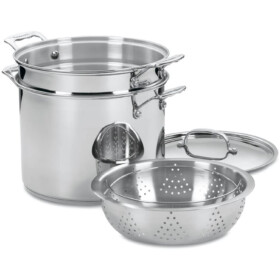
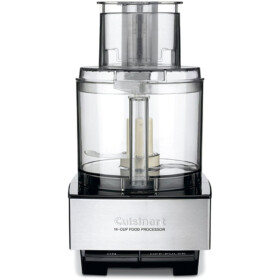
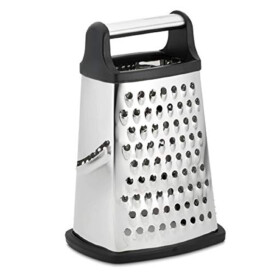
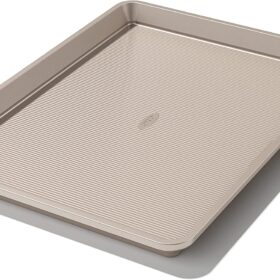
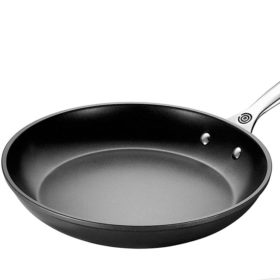
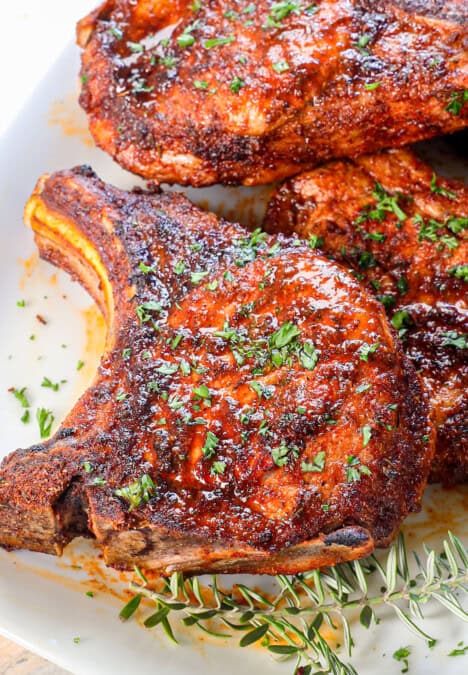
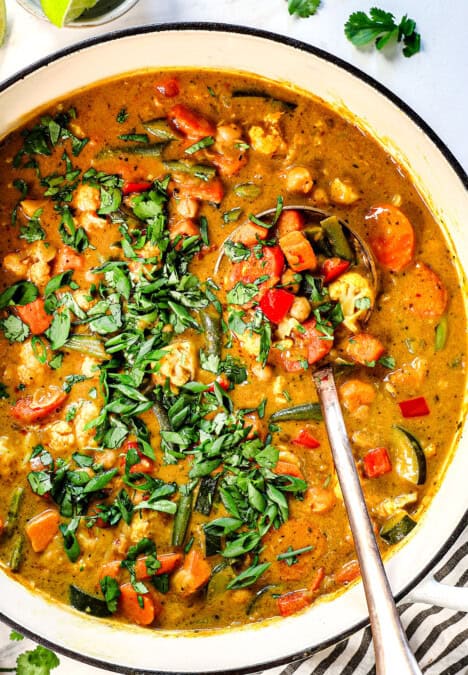
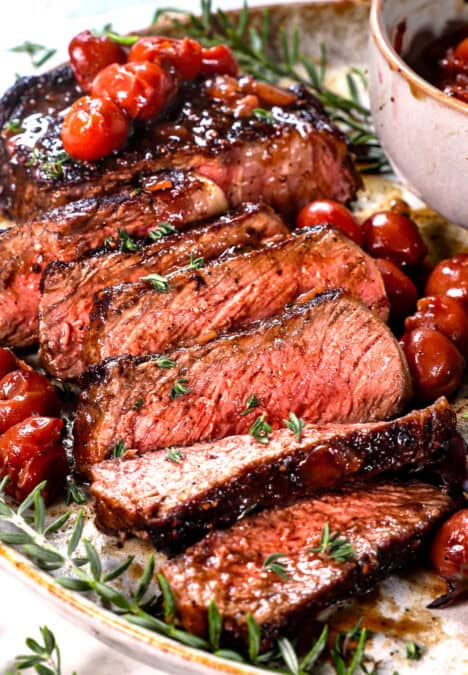
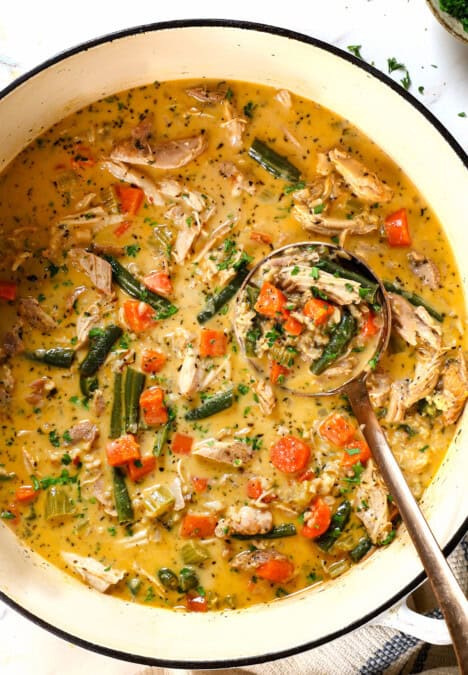
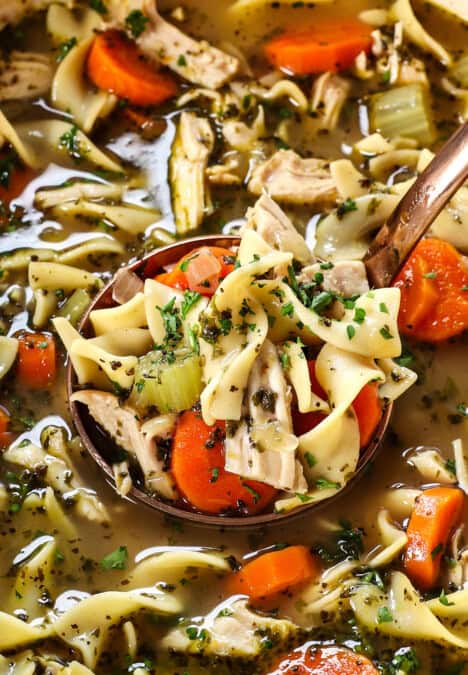
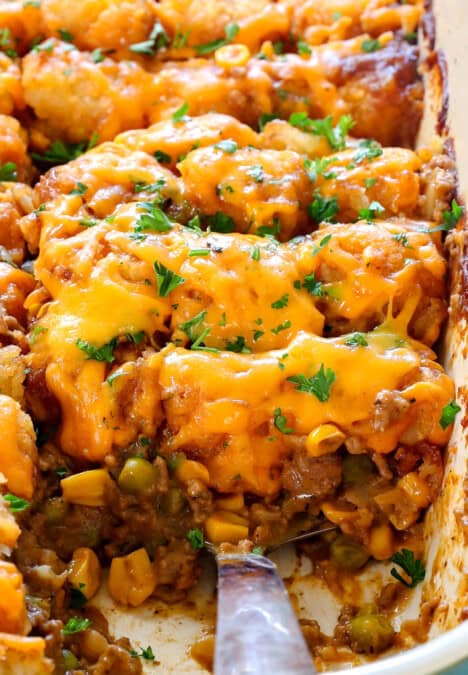

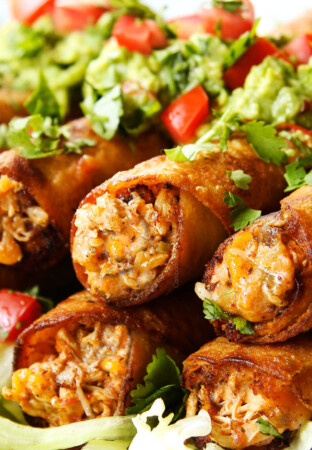
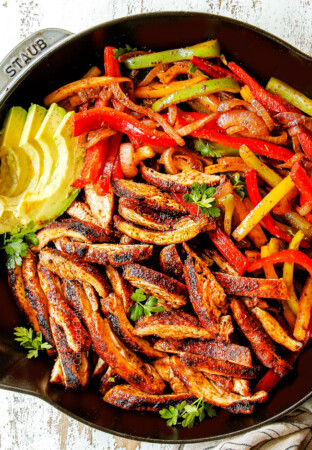
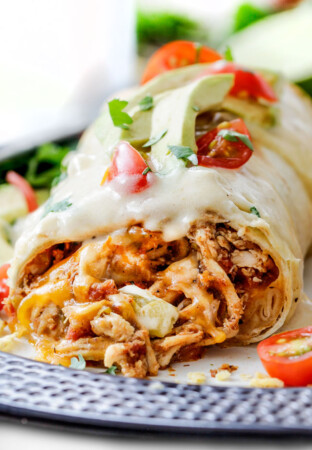
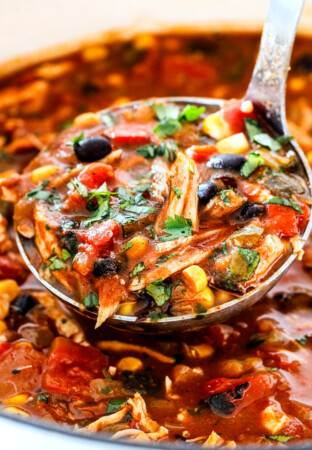
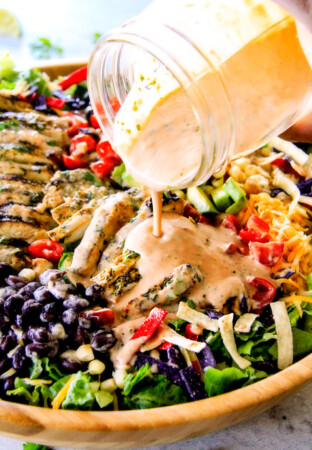
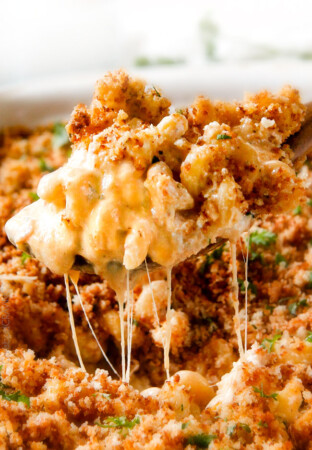

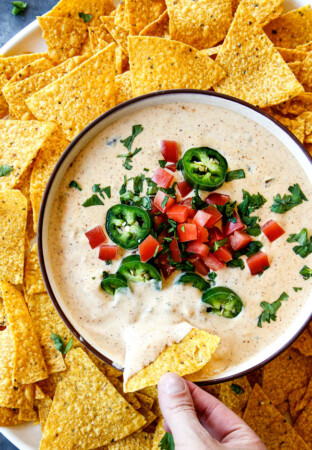
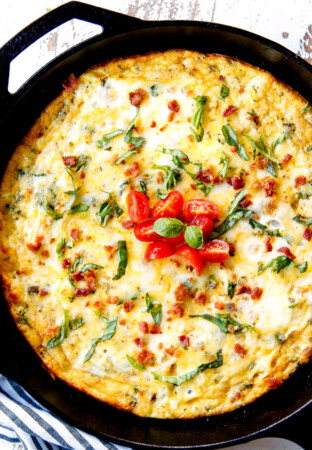
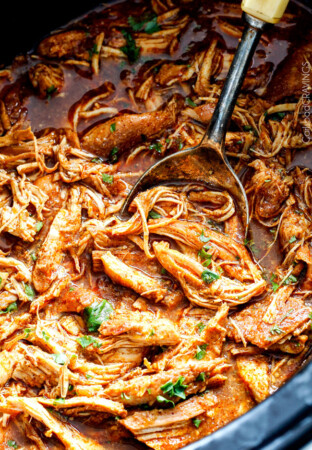
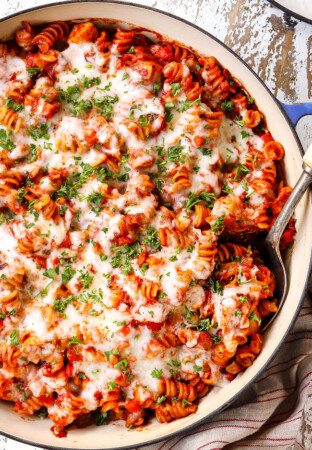

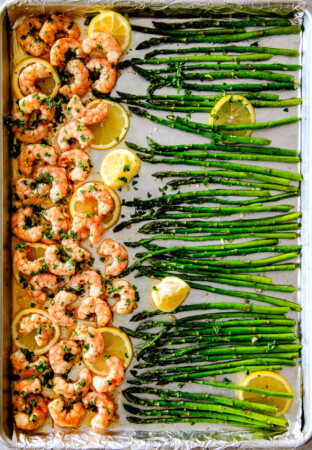
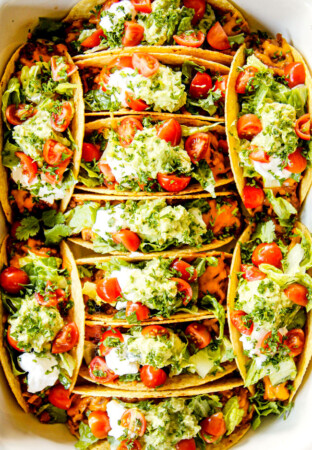
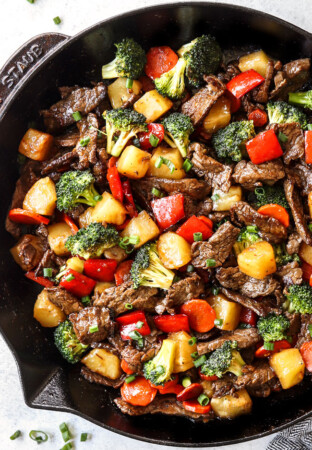
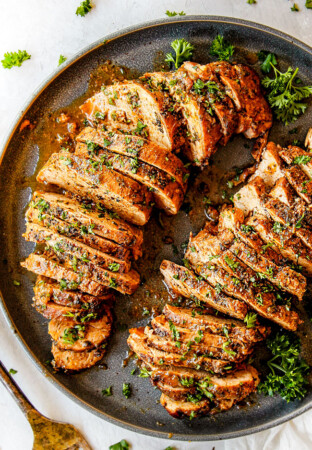
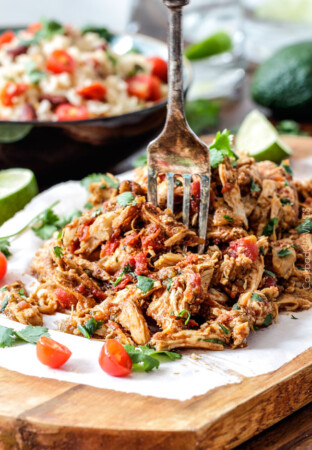
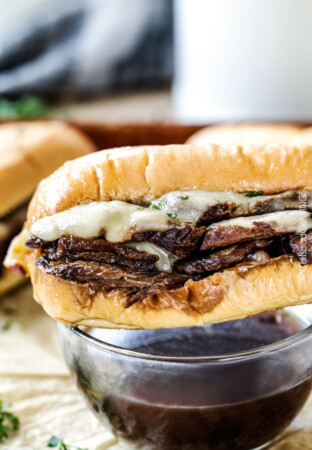
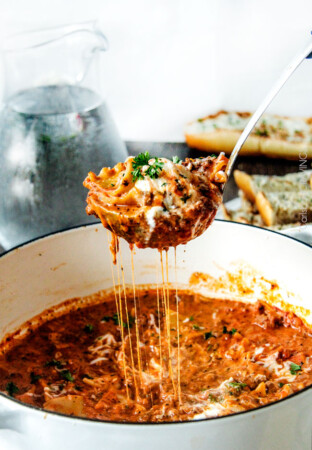
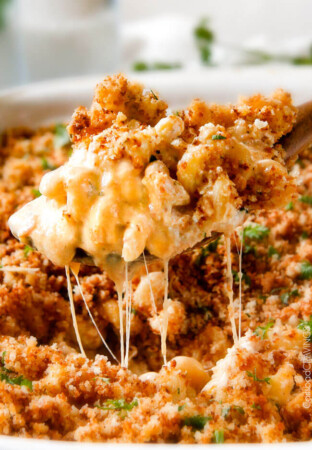
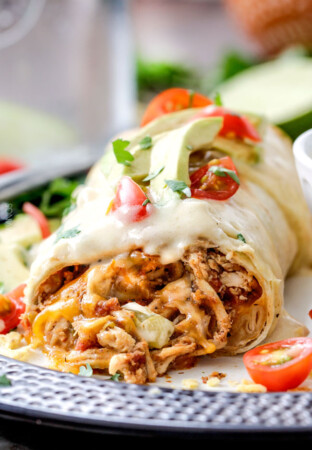
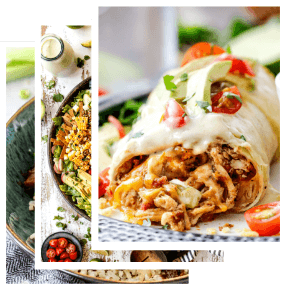
Brenda says
This was amazing and so easy to make, made with fresh veggies from my friends garden .
Jen says
That sounds heavenly! I am so glad you enjoyed the recipe!